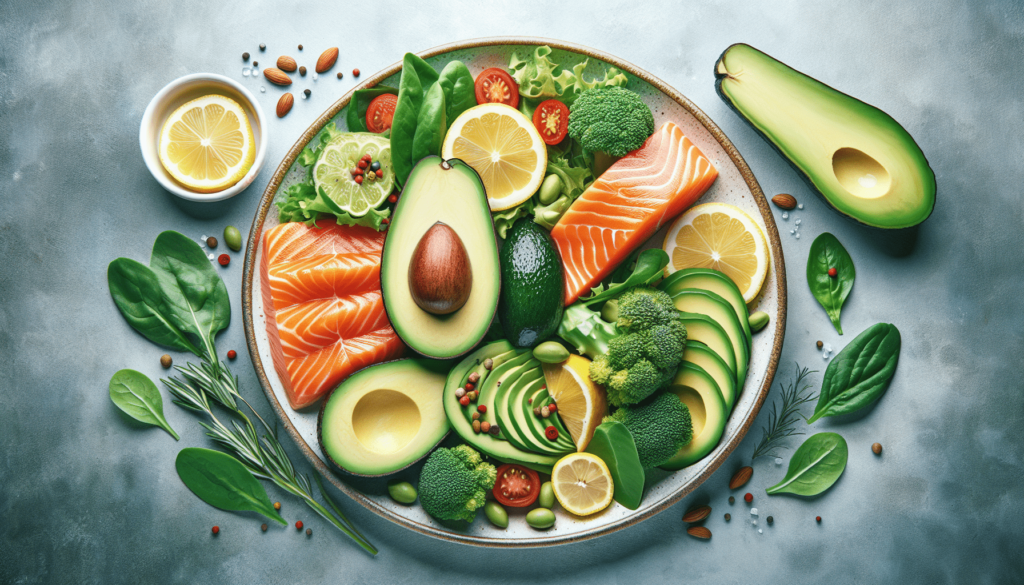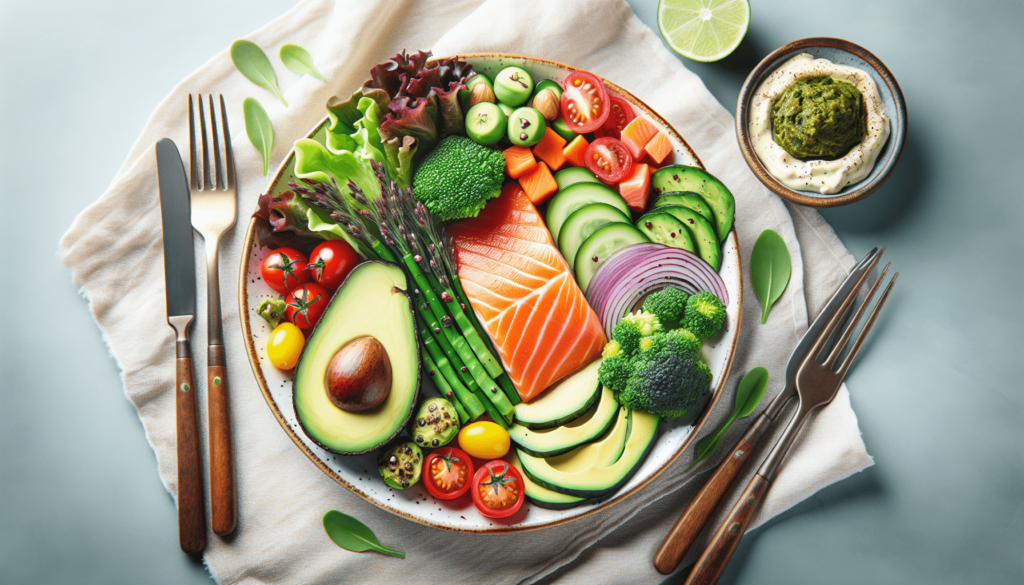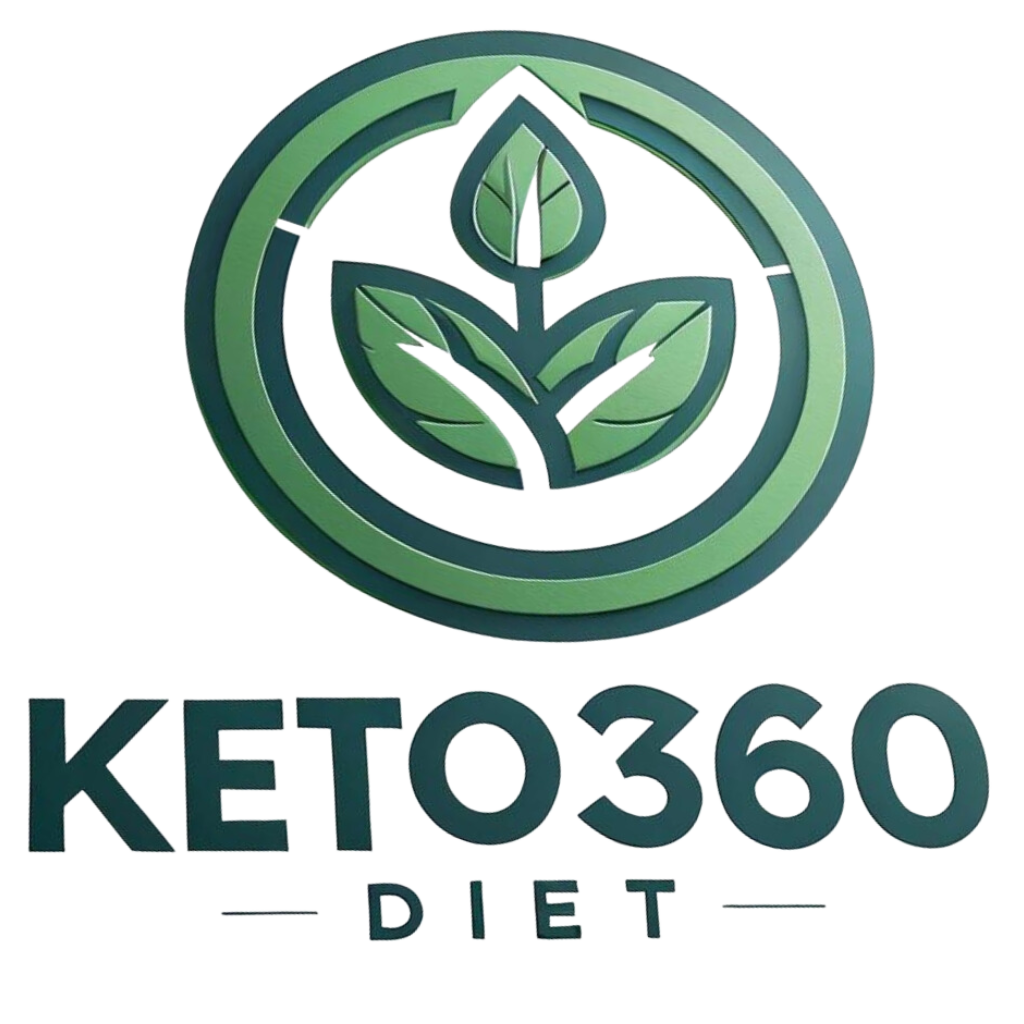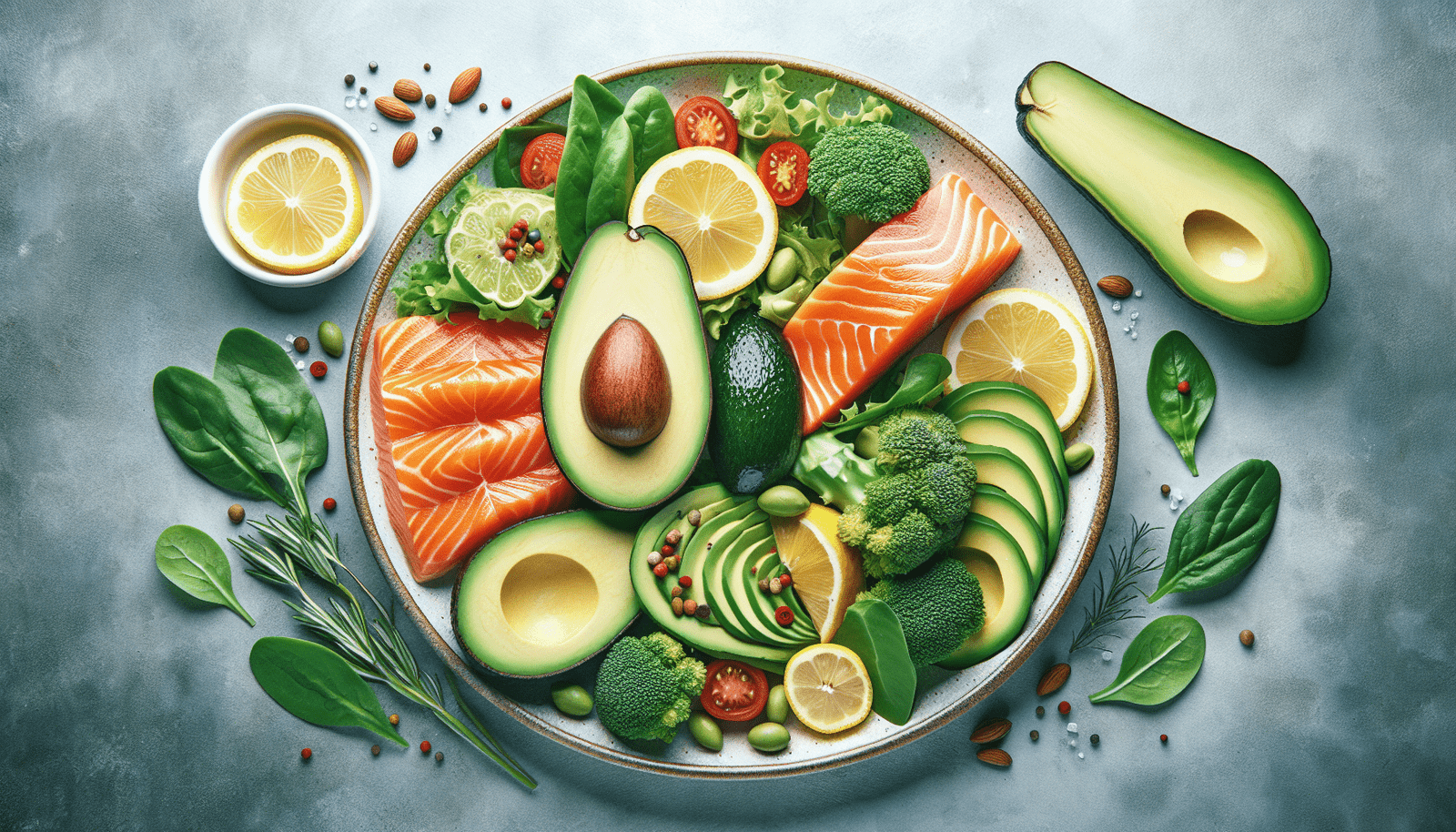Are you looking for an effective and hassle-free way to lose weight? Look no further than Simple Keto meal planning! With its focus on low-carb, high-fat foods, the Keto diet has become a popular choice for weight loss. In this article, we will explore the basics of Keto meal planning, providing you with simple and easy-to-follow tips to help you achieve your weight loss goals. From incorporating a variety of delicious and nutrient-dense foods to ensuring you stay within your macros, this article will guide you on your journey to a healthier and leaner you. Say goodbye to complicated diets and say hello to Simple Keto meal planning for weight loss!

Understanding the Keto Diet
The Keto Diet, short for the Ketogenic Diet, is a low-carbohydrate, high-fat diet that has been gaining popularity in recent years. Its main principle is to shift your body’s metabolism from using carbohydrates for energy to using fats. By drastically reducing your carbohydrate intake and increasing your fat intake, your body enters a metabolic state known as ketosis. This state allows your body to efficiently burn fat for fuel, helping you achieve weight loss and various other health benefits.
What is the Keto Diet?
The Keto Diet is a low-carbohydrate, high-fat diet that focuses on consuming foods that are rich in healthy fats, moderate in protein, and low in carbohydrates. The typical macronutrient ratio for the Keto Diet is around 70-75% fat, 20-25% protein, and 5-10% carbohydrates. By restricting your carbohydrate intake, your body starts to break down stored fat and convert it into ketones, which are then used as the primary source of energy for your body and brain.
How does it work?
The Keto Diet works by inducing a state of ketosis in your body. When you consume a high amount of carbohydrates, your body produces insulin to help regulate blood sugar levels. Insulin promotes the storage of glucose as glycogen in the liver and muscles. However, when you restrict your carbohydrate intake, your body doesn’t have enough glucose to use as fuel. As a result, your body starts breaking down stored fat into ketones, which can then be used as an alternative energy source. This metabolic switch to ketones for fuel is what leads to weight loss and other health benefits associated with the Keto Diet.
Benefits of the Keto Diet
There are numerous benefits to following the Keto Diet, beyond just weight loss. Some of the main benefits include:
-
Weight loss: The Keto Diet is known for its ability to promote weight loss, as it encourages your body to burn stored fat for fuel.
-
Increased energy levels: When your body is in a state of ketosis, it becomes more efficient at producing energy, leading to increased energy levels throughout the day.
-
Improved mental clarity: Many people report improved mental clarity and focus when following the Keto Diet. This may be due to the stable supply of energy provided by ketones.
-
Reduced appetite: The Keto Diet has been found to naturally suppress appetite, making it easier to control food intake and reduce cravings.
-
Improved blood sugar control: By reducing carbohydrate intake and stabilizing blood sugar levels, the Keto Diet can be beneficial for those with diabetes or insulin resistance.
-
Lowered risk of heart disease: The Keto Diet has been shown to decrease levels of triglycerides and LDL cholesterol while increasing levels of HDL cholesterol, which can reduce the risk of heart disease.
Considerations before starting the Keto Diet
Before starting the Keto Diet, there are a few considerations to keep in mind to ensure that it is a safe and suitable option for you:
-
Consult with a healthcare professional: It is always recommended to consult with a healthcare professional before starting any new diet or exercise program, especially if you have any underlying medical conditions.
-
Potential side effects: The transition into ketosis can cause temporary side effects such as fatigue, dizziness, and constipation. These symptoms are often referred to as the “keto flu” and usually subside after a few days.
-
Nutrient deficiencies: Since the Keto Diet restricts certain food groups, it is important to ensure that you are getting all the essential nutrients your body needs. Consider working with a nutritionist to develop a well-rounded meal plan.
-
Sustainability: While the Keto Diet can be effective for weight loss and certain health conditions, it may not be sustainable or suitable for everyone in the long term. Consider your lifestyle, food preferences, and overall health goals before committing to the Keto Diet.
Keto Diet Macronutrient Ratios
Macronutrients, which include carbohydrates, fats, and proteins, are the three main components of your diet that provide energy to your body. The Keto Diet focuses on specific macronutrient ratios in order to promote and maintain a state of ketosis.
Importance of macronutrients
Understanding the importance of macronutrients is crucial to successfully following the Keto Diet. Each macronutrient serves a specific purpose in your body:
-
Carbohydrates: Carbohydrates are your body’s primary source of energy. When consumed, they are broken down into glucose and used to fuel your muscles and organs. On the Keto Diet, carbohydrates need to be severely restricted to maintain ketosis.
-
Fats: Fats are an essential macronutrient that provides energy, supports cell growth, and helps protect organs. On the Keto Diet, fats are the main source of energy, so they need to be consumed in higher quantities.
-
Proteins: Proteins are the building blocks of your body, essential for muscle growth and repair. On the Keto Diet, protein intake needs to be moderate to prevent excess gluconeogenesis, a process where protein can be converted into glucose and interfere with ketosis.
Ideal macronutrient ratios on the Keto Diet
The ideal macronutrient ratios for the Keto Diet are approximately 70-75% of calories from fat, 20-25% from protein, and 5-10% from carbohydrates. This ratio ensures that your body stays in a state of ketosis, where it efficiently burns fat for energy. However, it is important to note that individual needs may vary, and you may need to adjust these ratios based on your activity level, body composition, and overall goals.
Calculating your macronutrient needs
To determine your specific macronutrient needs on the Keto Diet, you can use an online keto calculator or consult with a nutritionist. These tools take into account factors such as your age, gender, weight, activity level, and desired calorie intake to provide you with the appropriate macronutrient ratios. Tracking your food intake using a food diary or mobile app can also be helpful in ensuring that you are meeting your macronutrient goals.
Building a Keto Meal Plan
Building a Keto Meal Plan is essential for successfully following the Keto Diet. Having a well-thought-out plan ensures that you are consuming the right macronutrient ratios and getting a variety of nutrient-rich foods. Here are some steps to help you get started:

Setting your daily calorie intake
To begin building your Keto Meal Plan, you need to determine your daily calorie intake. This can be done by calculating your basal metabolic rate (BMR), which is the number of calories your body needs to function at rest, and then adjusting for your activity level. There are online calculators and formulas available to help you determine your BMR. Once you have your total daily calorie intake, you can allocate your macronutrients accordingly.
Choosing the right foods
When choosing foods for your Keto Meal Plan, it is important to focus on those that are low in carbohydrates and high in healthy fats. Some examples of keto-friendly foods include:
- Meats (such as beef, chicken, pork, and lamb)
- Fish and seafood
- Eggs
- Avocado
- Nuts and seeds (such as almonds, walnuts, chia seeds, and flaxseeds)
- Healthy oils (such as olive oil, coconut oil, and avocado oil)
- Non-starchy vegetables (such as leafy greens, broccoli, cauliflower, and zucchini)
- Full-fat dairy products (such as cheese, cream, and butter)
- Low-carb fruits (such as berries and avocados)
Avoid foods that are high in carbohydrates, such as grains, sugar, and starchy vegetables.
Planning your meals in advance
Once you have chosen the right foods, it is important to plan your meals in advance. This not only helps you stay on track with your macronutrient ratios but also saves you time and reduces the temptation to make unhealthy food choices. Start by creating a weekly meal plan that includes breakfast, lunch, dinner, and snacks. Consider batch cooking and meal prepping on weekends to have meals ready for the entire week.
Meal prepping and batch cooking
Meal prepping and batch cooking are essential components of successful Keto Meal Planning. By preparing meals in advance, you can ensure that you always have a keto-friendly option available, even on busy days. Here are some tips for meal prepping and batch cooking:
-
Choose one or two days of the week to dedicate to meal prepping. This could involve cooking and portioning out proteins, roasting vegetables, and preparing sauces or dressings.
-
Invest in quality food storage containers that are freezer and microwave-safe. This will make it easier to store and reheat your prepared meals.
-
Cook in bulk to save time and effort. For example, you can cook a large batch of chicken breasts that can be used throughout the week in different meals like salads, stir-fries, or wraps.
-
Use the freezer to your advantage. Freeze individual portions of meals or ingredients that you can easily thaw and use when needed.
By incorporating meal prepping and batch cooking into your routine, you’ll be well-equipped to stick to your Keto Meal Plan and make healthier choices throughout the week.
Simple Keto Breakfast Ideas
Breakfast is often considered the most important meal of the day, and it is no different when following the Keto Diet. Here are some simple and delicious Keto breakfast ideas to help you start your day on the right track:
Eggs and avocado
Starting your day with a classic combination of eggs and avocado is not only delicious but also packed with healthy fats and protein. Consider making an omelet or scrambled eggs, topped with sliced avocado and a sprinkle of salt and pepper.
Keto-friendly smoothies
Smoothies can be easily adapted to fit a Keto Diet by using low-carb fruits, such as berries or avocado, and adding in healthy fats like coconut milk or almond butter. You can also boost the protein content by adding in a scoop of low-carb protein powder or Greek yogurt.
Bacon and vegetable scramble
For a hearty and satisfying breakfast, try a bacon and vegetable scramble. Simply cook some bacon until crispy, then sauté your choice of vegetables, such as spinach, bell peppers, and mushrooms, in the bacon fat. Add beaten eggs and cook until scrambled. Serve with a sprinkle of cheese if desired.
Chia seed pudding
Chia seed pudding is a simple and nutritious breakfast option that can be prepared in advance. Mix chia seeds with your choice of low-carb milk, such as almond or coconut milk, and sweeten with a keto-friendly sweetener. Let it sit in the fridge overnight, and in the morning, you’ll have a creamy and satisfying pudding to enjoy.
These breakfast ideas are just a starting point, and you can customize them based on your preferences and macronutrient needs.
Easy Keto Lunch Recipes
When it comes to lunch on the Keto Diet, there are plenty of delicious and satisfying options that will keep you on track with your goals. Here are some easy Keto lunch recipes to try:
Chicken salad with avocado
Make a simple and flavorful chicken salad by combining cooked chicken breast with diced avocado, chopped celery, and a keto-friendly dressing like olive oil and lemon juice. Serve it on a bed of leafy greens or wrapped in lettuce leaves for a refreshing and filling lunch.
Salmon and vegetable stir-fry
Salmon is an excellent source of healthy fats and protein, making it a perfect choice for a Keto lunch. Sauté salmon fillets with a variety of low-carb vegetables such as broccoli, bell peppers, and zucchini. Season with herbs and spices of your choice for added flavor.
Zucchini noodles with pesto
Instead of traditional pasta, make zucchini noodles using a spiralizer or vegetable peeler. Sauté the zucchini noodles in olive oil until tender and toss with homemade or store-bought keto-friendly pesto sauce. Top with grilled chicken or shrimp for added protein.
Tuna lettuce wraps
For a quick and portable lunch option, make tuna lettuce wraps. Mix canned tuna with diced celery, chopped pickles, and a keto-friendly mayo. Spoon the tuna mixture onto large lettuce leaves and roll them up like a burrito. This makes for a light and refreshing lunch that is easy to assemble and enjoy.
Feel free to experiment with these lunch recipes by adding your favorite vegetables, herbs, and spices to make them your own.
Delicious Keto Dinner Recipes
Dinner is a perfect opportunity to indulge in delicious and satisfying Keto meals. Here are some mouthwatering dinner recipes that will satisfy your cravings while keeping you on track:
Grilled steak with buttered asparagus
Grill a juicy steak to your desired doneness and serve it with a side of buttered asparagus. Season the steak with your choice of herbs and spices, and cook the asparagus in a skillet with melted butter until tender-crisp. This meal is rich in healthy fats and protein, sure to leave you satisfied.
Cauliflower crust pizza
If you’re craving pizza, consider making a cauliflower crust pizza. To make the crust, grate cauliflower and cook it until soft. Mix in eggs, cheese, and seasonings, then shape it into a pizza crust and bake until golden and crispy. Top with low-carb tomato sauce, cheese, and your favorite keto-friendly toppings, then bake until cheese is melted and bubbly.
Garlic butter shrimp with zoodles
Sauté shrimp in a skillet with garlic and butter until cooked through. Serve it over spiralized zucchini noodles (zoodles) that have been lightly cooked in olive oil until tender. This dish is quick, flavorful, and provides a healthy dose of protein and healthy fats.
Stuffed bell peppers with ground beef
Cut the tops off bell peppers and remove the seeds. Fill the peppers with a mixture of cooked ground beef, diced tomatoes, onions, and cheese. Bake until the peppers are tender and the filling is heated through. This dish is not only visually appealing but also packed with flavor and nutrients.
These dinner recipes are just a starting point, and you can modify them based on your taste preferences and dietary needs.
Snack Ideas for Keto
Snacking can be a challenge when following the Keto Diet, as many traditional snack foods are high in carbohydrates. However, there are plenty of delicious and satisfying snacks that are low in carbs and fit perfectly into a Keto lifestyle. Here are some snack ideas for Keto:
Cheese and almond combo
Pairing cheese with almonds is a great way to satisfy your hunger and get a dose of healthy fats and protein. Choose a variety of cheeses, such as cheddar, gouda, or mozzarella, and pair them with a handful of almonds.
Keto-friendly nuts and seeds
Nuts and seeds are nutrient-dense and provide a great source of healthy fats and fiber. Some Keto-friendly options include almonds, walnuts, sunflower seeds, and pumpkin seeds. Keep portion sizes in mind, as nuts and seeds can be calorie-dense.
Kale chips
Kale chips are a crunchy and low-carb alternative to traditional potato chips. Toss kale leaves with olive oil, salt, and pepper, then bake in the oven until crisp. This snack is packed with vitamins and minerals while satisfying your craving for something crispy.
Celery sticks with cream cheese
For a quick and refreshing snack, enjoy celery sticks with a dollop of cream cheese on top. Celery is low in carbs and high in fiber, while cream cheese provides a creamy and satisfying texture.
Feel free to get creative with your Keto snacks by combining different ingredients and flavors to keep things interesting.
Keto-Friendly Desserts
Although dessert may seem off-limits on the Keto Diet due to its typically high carbohydrate content, there are still plenty of delicious and satisfying dessert options that can be enjoyed while following a Keto lifestyle. Here are some Keto-friendly dessert ideas:
Dark chocolate fat bombs
Fat bombs are small, high-fat snacks that are designed to keep you satiated and provide an energy boost. Dark chocolate fat bombs can be made by melting dark chocolate with coconut oil and adding in nuts, seeds, or nut butter. These indulgent treats are rich in healthy fats and low in carbohydrates.
Coconut flour cookies
Coconut flour is a low-carb alternative to traditional wheat flour and works well in baking Keto-friendly cookies. Combine coconut flour, eggs, butter, and a natural sweetener like stevia or erythritol to create a dough. Shape the dough into cookies and bake until golden and crispy.
Avocado chocolate mousse
Avocado is a versatile fruit that can be used to create a creamy and indulgent chocolate mousse. Blend ripe avocados with cocoa powder, a keto-friendly sweetener, and a splash of coconut milk until smooth and creamy. Refrigerate until chilled and serve as a delicious and satisfying dessert.
Berry keto popsicles
Mix pureed berries with coconut milk or almond milk and a keto-friendly sweetener. Pour the mixture into popsicle molds and freeze until solid. These refreshing treats are low in carbs and high in flavor, perfect for satisfying your sweet tooth on a Keto Diet.
Remember to enjoy these desserts in moderation and adjust the ingredients and portion sizes to fit your macronutrient goals.
Tips for Successful Keto Meal Planning
To make the most out of your Keto Meal Planning journey, here are some tips to keep in mind:
Create a shopping list
Before heading to the grocery store or planning your online order, create a detailed shopping list based on your meal plan. This will help you stay organized and ensure that you have all the ingredients you need.
Stick to whole foods
While there are many convenient Keto products available, it is important to prioritize whole, unprocessed foods in your meal plan. Whole foods provide a wide range of nutrients and are generally lower in carbohydrates.
Experiment with different recipes
Keep your meal plan exciting by trying new recipes and experimenting with different flavors and ingredients. This will help you stay motivated and prevent boredom.
Stay consistent and track your progress
Consistency is key when following the Keto Diet. Stick to your meal plan, track your progress, and make adjustments as needed. Stay mindful of your portion sizes and be aware of any changes in your body and overall well-being.
By following these tips, you’ll be well-equipped for successful Keto meal planning and ultimately achieve your health and weight loss goals.
Conclusion
In conclusion, the Keto Diet is a low-carbohydrate, high-fat diet that can help you achieve weight loss and numerous health benefits. By understanding the principles of the Keto Diet, calculating your macronutrient needs, and building a well-rounded meal plan, you can successfully follow this lifestyle and enjoy its many benefits. From simple breakfast ideas and delicious lunch and dinner recipes to satisfying snacks and desserts, there are endless possibilities for creating delicious Keto meals. With the right planning, consistency, and tracking, you can embark on a successful Keto journey that will lead you to a healthier and happier you. Remember to consult with a healthcare professional and listen to your body throughout the process. Good luck on your Keto adventure!

